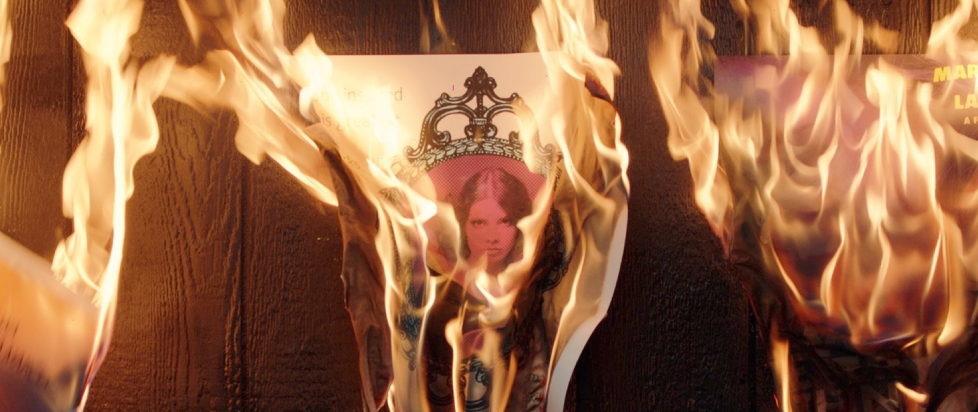
The Rapists of Immortality
Content Warning: This piece discusses sexual assault, violence, and child abuse.
———
“What does a ten million dollar night look like? Doesn’t finish with a polite nod at the door.”
A billionaire grabs a young starlet. She locks herself in the bath. He mocks her; she runs. She’s dead the next morning. They’ll say it’s an accident.
Rewind. Run your thumb along the reel and find the seam. The one frame you could have chosen, if you’d had a choice. Here is the scene that plays inside you; the scene behind the scene.
The starlet is gone now, replaced by the bitter monster who survives. This time, of course, the billionaire doesn’t get through half his lines before you grab his throat and throw him to the ground and bludgeon him to death.
Face the camera. Let the audience really feel your despair.
“No matter how many I kill, there’s always more”.
That’s good!
One more time, now. From the top.
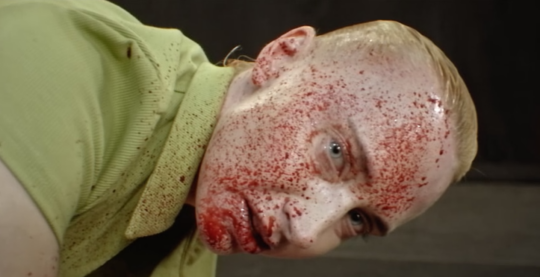
NO MATTER HOW MANY I KILL, THERE’S ALWAYS MORE
Immortality, like Barlow’s other games, is concerned with meaning-making. Here’s a bunch of video clips, a general premise (“find more video clips”), and off you go. Do you want to work out the plot of three old movies? Okay. Do you want to discover the sordid details of some actor’s private life? Okay. Do you want to decipher an eerie supernatural meta-mystery? Okay. You do this by making arbitrary connections that unlock new scenes: this actor becomes that actor; this lamp, that lamp. You click. You stumble around the node map until it clicks.
The magic trick is when you notice the magic trick: the framing device is everything.
(This is not unlike therapy.)
Back to the billionaire. We cut to his swollen face – he’s wearing an antique crown. Click the crown – it’s now a scene with the devil, from Ambrosio; the devil is wearing another crown and represents The Other One, the not-you (“played this role before”, the Other quips). Keep clicking crowns and you’ll reach a scene with the starlet in her former role, a young monk (actually the devil in disguise) – and scrub the scene back: now she’s you, The One. You recall a time you used to tempt The Other One in the desert – though it might have been the other way around.
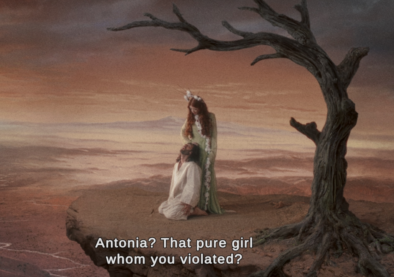
This is fun, isn’t it? An intellectual exercise. Hovering above it all: free to string together meanings however we see fit.
Back down to earth. I’ll talk about myself.
NO MATTER HOW MANY I KILL, THERE’S ALWAYS MORE
What rises in me when I hear this line is the horror and certainty that there will never be enough. There will always be more rapists. We can kill “a” rapist, but we cannot kill The Rapist, conceptually.
- Stop intellectualizing, Aster.
- Okay.
What I mean is that no number of dead rapists will do it, because what we are trying to kill is not outside us, it is inside. Like Nasreddin Hodja, searching for the ring he lost in the cellar in the street by daylight.
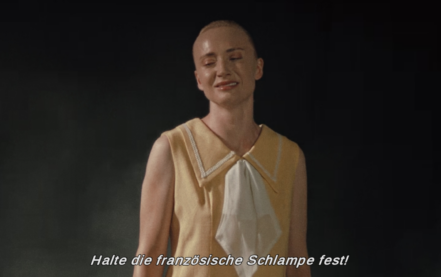
NO MATTER HOW MANY I KILL, THERE’S ALWAYS MORE
More than my certainty, what scares me most is, in fact, my budding euphoria in your violence. Yes! Beat that worthless piece of shit to death! YES. I need to see him dead. I NEED to feel the dull wet rhythmic thwack of the microphone fracturing his skull.
I know the transgressive thrill of witnessing the inhuman and their punishment. I remember the shock of my then-best-friend when we attended a screening of Sin City, screaming with primal joy when the Yellow Man – a child rapist – gets his genitals pulled out. This, then, the masterpiece of the public execution: the rapture of watching the not-me burned alive.
———

I understand my mother’s abuse as radiation. She took an infant and used it to regulate her own dysfunctional nervous system. She sunk shame – rotten knotted cords of shame – into me, like corporations bury nuclear waste. I was overflowing, and still, she sunk in more.
When a caregiver abuses a child, it is typical for that child to identify with the perpetrator in some way, to internalize themselves as the reason for the abuse. I can understand this as a mechanism to preserve the essence of the “good caregiver”, to facilitate the experience of love, unspoiled, which is necessary for our psychic development. It is a survival mechanism. In this way, I grew up with an unplaceable terror that I was a monster and that I would abuse the people I truly loved.
You could say I identified with the role.
PLAYED THIS ROLE BEFORE
There is a concept in Transactional Analysis called “the drama triangle”. The points of the triangle are three actors, playing three roles: the victim, the persecutor and the rescuer. Every role in the triangle reinforces and reconstructs the other roles, endlessly.
I am wary of proving which of us plays the devil. I am wary of watching the wicked suffer. I am wary of my desire. To watch an execution is to be righteous: you are the abuser, I am the innocent. I am learning I yearn for the purity of it, my desire to rip out everything called “rotten”, to be free of what was put inside against my will. I don’t want to be a part of that system. And yet: one does not simply exit the drama triangle.
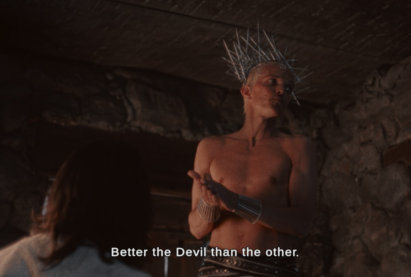
NO MATTER HOW MANY I KILL, THERE’S ALWAYS MORE
In psychodynamic theory there is something called “the repetition compulsion”. In Gestalt theory there is the idea of a gestalt, a sort of minimum unit of psychic completion which can be interrupted at key points. When clients begin therapy, one of the questions that can be useful is “What keeps happening?”, because it is in what keeps happening that we may learn what our unresolved material is, what has failed to “complete”.
We could see The One’s patterns of behavior as an incomplete gestalt. In fact, we could see Immortality as a device for generating an incomplete gestalt, a space we are tempted towards, over and over again: the promise that, this time, we’ll finally get the answers we are seeking, the itch that didn’t get scratched, the perfect satisfaction. Immortality as seduction.
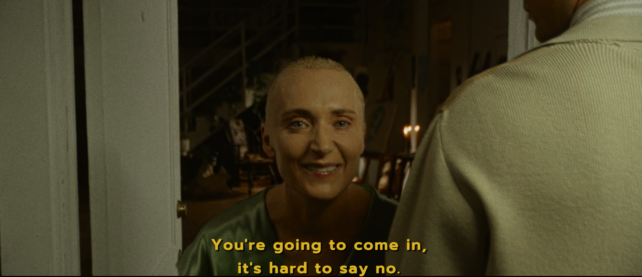
Would it be safer to say I was coerced? Immortality models a mechanism of abuse in its construction: the idea that our salvation lies in more, that if we just X enough, then Y. It keeps us in the triangle. When Marissa Marcel whispers hungrily that she is going to seduce Carl Goodman, I wonder what choice Carl has in the matter.
Did she rape him? I don’t want to believe that. Because she is a woman, a survivor? Because I am attracted to her? Because they are beholden to psychic forces I don’t yet fully understand?
Perhaps if you would play the game for an hour, just one more hour; perhaps if you find all the scenes, really study them, find that one frame (you know the one) – then, you’ll learn the truth. You won’t have to worry about being in the wrong. You will walk in righteousness.
Don’t you see what I am doing? We have already played enough.
IMMORTALITY
At the end of Immortality you take over my whole screen. All of the clips I have assembled are replaced by pieces of one face, until there is only you – until only you, The One, remain.
“I’m part of you now”.
Is this a violation? In the fiction of the game, it is. You are consuming me, as you have consumed others; made them a part of you. Your former hosts were “prey”. And also, I wonder – why not say “You are a part of me now?” What exactly does that mean?
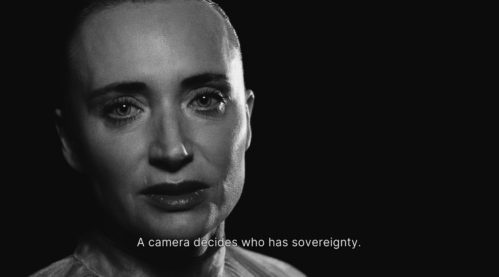
And still, I am not deceived. “I” am not me; I, Aster, the player, am not the same as “the player”, that is, the assumed “player” of the game, nor the player character, either, who I like to imagine is some hapless bastard on work experience (and who might be thrilled by this whole development, for all I know). Likewise, “you”, my dear reader, are not the “you” of this story. Don’t get it twisted.
And it is true, in a different way, that you and I are a part of each other. We are we. I wonder what changes when we decline this separation, “I”, and “you”, The One and The Other One.
I locate a heavy vein of despair in my head, my despair at being overpowered and defeated by the Other, my reality rejected and replaced by theirs instead. I have lived this. More than once.
And also —
I am still here.
Maybe I am the truth.
Here is a part of me now. Take from it what you want.
———
Aster Shen has returned. Her favorite thing is to tell people who think they’re strong “no” straight to their faces. She has too much identity, too little time, and loves her close friends dearly.




